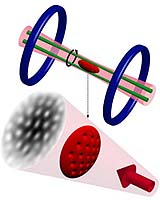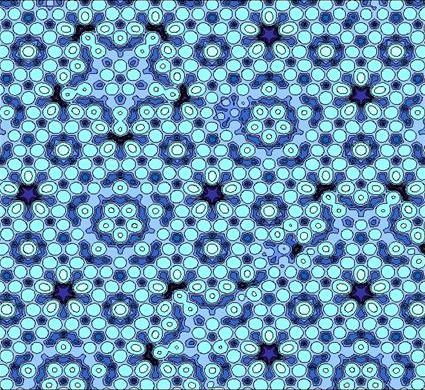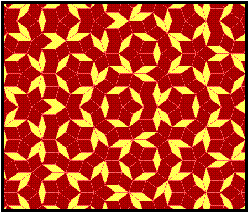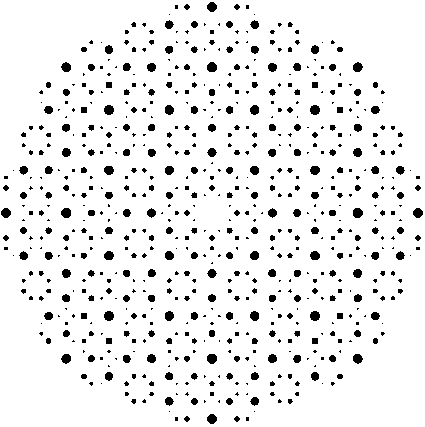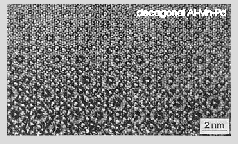1. എന്റെ ശവപ്പെട്ടി ചുമക്കുന്നവരോട്
എന്റെ ഹൃദയത്തിന്റെ സ്ഥാനത്ത് ഒരു പൂവുണ്ടായിരിക്കും
ജിജ്ഞാസയുടെ ദിവസങ്ങളില് പ്രേമത്തിന്റെ-
ആത്മതത്വം പറഞ്ഞു തന്നവളുടെ ഉപഹാരം
മണ്ണ് മൂടുന്നതിന് മുമ്പ്
ഹൃദയത്തില് നിന്നും ആ പൂവ് പറിക്കണം
ദലങള് കൊണ്ട് മുഖം മൂടണം
രേഖകള് മാഞ്ഞ കൈവെള്ളയിലും ഒരു ദലം
പൂവിലൂടെ എനിക്കു തിരിച്ചു പോകണം
പൂവിലൂടെ എനിക്കു തിരിച്ചുപോകണം
മരണത്തിന്റെ തൊട്ടുമുമ്പുള്ള നിമിഷം
ഈ സത്യം പറയാന് സമയമില്ലായിരിക്കും
ഒഴിച്ച് തന്ന തണുത്ത വെള്ളത്തീലൂടെ
അത് മൃതിയിലേക്ക് ഒലിച്ചുപോകും
ഇല്ലെങ്കില് ഈ ശവപ്പെട്ടി മൂടാതെ പോകൂ
ഇല്ലെങ്കില് ഈ ശവപ്പെട്ടി മൂടാതെ പോകൂ
ഇനിയെന്റെ ചങ്ങാതികള് മരിച്ചവരാണല്ലൊ!
ഒരേ മണ്ണ് കൊണ്ട് നീയും ഞാനും സൃഷ്ടിയ്ക്കപ്പെട്ടു..
പ്രാണന് കിട്ടിയ നാളുമുതല് നമ്മുടെ രക്തം
ഒരു കൊച്ചരുവി പോലെ ഒന്നിച്ച്
നമ്മുടെ പട്ടങ്ങള് ഒരേ ഉയരത്തില് പറന്നു
കളി വള്ളങ്ങള് ഒരേവേഗത്തില് തുഴഞ്ഞു
കടലാസുതത്തകള് പറഞ്ഞു
നമ്മള് വേഗം വളരുമെന്ന്
വീടുവെച്ച് വേളി കഴിയ്ക്കുമെന്ന്..
ഒഴുകിപോയ പുഴയില്
കീറിപ്പോയ കടലാസുതത്തകള്
ഇന്നും സാക്ഷികളല്ലോ
കുട്ടിക്കാലം നദീതീരത്തേയ്ക്ക്
കൌമാരം കമോപുരത്തിലേയ്ക്ക്
മനസ്സില് പെട്ടന്ന് വെളിച്ചം
പൊലിഞ്ഞു പോയ ഒരു ദിവസം
ഞാനൊരു കുപ്പിവള പൊട്ടിച്ചു
ആ വളപ്പൊട്ട് മുറിഞ്ഞ ഒരു ഞരമ്പാണ്
മനസ്സില് പെട്ടന്ന് വെളിച്ചം
പൊലിഞ്ഞു പോയ ഒരു ദിവസം
ഞാനൊരു കുപ്പിവള പൊട്ടിച്ചു
ആ വളപ്പൊട്ട് മുറിഞ്ഞ ഒരു ഞരമ്പാണ്
നമ്മള് വെള്ളം തേടിയ നീര്മ്മതളം തട്ടുമോ
നമ്മള് വെള്ളം തേടിയ നീര്മ്മതളം തട്ടുമോ
നീയറിഞ്ഞോ നമ്മുടെ മയില് പീലി പെറ്റു
നൂറ്റൊന്നു കുഞ്ഞുങ്ങള്..
3. ബുദ്ധനും ആട്ടിന്കുട്ടിയും (എ അയ്യപ്പന്)
ബുദ്ധാ ഞാനാട്ടിന്കുട്ടികല്ലേറുകൊണ്ടിട്ടെന്റെ കണ്ണുപോയ്
നിന് ആല്ത്തറകാണുവാനൊട്ടുംവയ്യ.
കൃപാധാമമേ ബുദ്ധാ, കാണുവാനൊട്ടും വയ്യ
പ്രഭാതാരവും എന്നെ തെളിച്ച പുല്പ്പാതയും.
ഇടയന് നഷ്ടപ്പെട്ട കുഞ്ഞാടാണല്ലോ, യിനി
തുണ നീ മാത്രം ബുദ്ധാ, അലിവിന്നുറവു നീ.
കണ്ണിലെച്ചോര വീഴും പാതയില് നീ നില്ക്കുമോ
കണ്ണിനെച്ചുംബിച്ചെന്നെ തോളിലേറ്റുമോ, നിന്റെ
കണ്ണിന്റെ കനിവെല്ലാം കാണുവാന് കഴിയുമോ?
മുള്ളുകള് തറയ്ക്കുന്നു കാലുകള് മുടന്തുന്നു
വിണ്ണിലേക്കുയരുന്ന വൈഖരി പോലെ നിന്റെ
പൊന്നുവാഗ്ദാനം വീണ്ടും കേള്ക്കുമോ തഥാഗതാ!
മിണ്ടാത്ത നിന് വെങ്കല പ്രതിമയെങ്ങാണവോ
മണ്ട ഞാന് പൊട്ടിച്ചെന്റെ കുരുതി സമ്മാനിക്കാം
കാരുണ്യമോ, കരസ്പര്ശമോയേല്ക്കാതെ നിന്
പേരുവിളിച്ചും കൊണ്ടെന് ചോരക്കണ്ണടയവേ,
പുല്ക്കൊടിത്താഴ്വരകള് കാതില്പ്പറഞ്ഞൂയെന്നെ
കല്ലെറിഞ്ഞവനൊരു സിദ്ധാര്ത്ഥനെന്ന കുട്ടി
4. അയ്യപ്പവചനം
(എ.അയ്യപ്പന്റെ തെരഞ്ഞെടുത്ത വരികൾ)
തീ പിടിച്ച കാലുകളോടെ
ഓടുകയാണൊരു മൃഗം..
മൃഗത്തിനു തീയോട് പക
കരുണ തേടാൻ കാതങ്ങൾ താണ്ടണം
ക്രൌര്യത്തിന്റെ ആക്രമണത്തിനു അർദ്ധ നിമ
തുപ്പല്തൊട്ട് മായ്ക്കരുതക്ഷരം
ടീച്ചര് കൊടുത്ത
ചോക്കുകൊണ്ടു വരയ്ക്കുന്നു
മഷിത്തണ്ടിന്റെ മണമുള്ള
സ്ലേറ്റിലൊരു ഭൂപടം
പ്രണയം എന്നത് ജീവിച്ചിരിക്കുന്ന ശവമാണ്
5. ഞാന്
ഞാന് കാട്ടിലും
കടലോരത്തുമിരുന്ന്
കവിതയെഴുതുന്നു
സ്വന്തമായൊരു
മുറിയില്ലാത്തവന്
എന്റെ കാട്ടാറിന്റെ
അടുത്തു വന്നു നിന്നവര്ക്കും
ശത്രുവിനും സഖാവിനും
സമകാലീന ദുഃഖിതര്ക്കും
ഞാനിത് പങ്കുവെയ്ക്കുന്നു..
6. അത്താഴം
ചോരയില് ചവുട്ടി ആള്ക്കൂട്ടം നില്ക്കെ..
മരിച്ചവന്റെ പോക്കെറ്റില് നിന്നും പറന്ന
അഞ്ചു രൂപയിലായിരുന്നു എന്റെ കണ്ണ്..
ഞാനുണ്ടായിട്ടും താലിയറുത്ത കെട്ടിയോള്
എന്റെ കുട്ടികള്.. വിശപ്പ് എന്ന നോക്കുക്കുത്തികള്..
ഇന്നത്തത്താഴം ഇത് കൊണ്ടാവാം..
ഈ രാത്രിയില് അത്താഴത്തിന്റെ രുചിയോടെ ഉറങ്ങുന്ന എന്റെ മക്കള്..
അര വയറോടെ അച്ചിയും ഞാനും..
മരിച്ചവന്റെ പോസ്റ്റ് മോര്ട്ടമോ ശവദാഹമോ കഴിഞ്ഞിരിക്കാം..
അടയുന്ന കണ് പോളകളോടെ ഓര്ക്കുവാന് ശ്രമിക്കുന്നു
ചോരയില് ചവുട്ടി നില്ക്കുന്ന ആള്ക്കൂട്ടം...
നമുക്കൊരൂഷ്മള ദീപ്തിയാര്ന്നൊരി
മദ്ധ്യാഹ്നവേനലില്
യെത്രമേല് സുഖം
യെത്രമേല് ഹര്ഷം
യെത്രമേല് ദുഃഖമുക്തി പ്രധാനം
ഗ്രീഷ്മമെ സഖീ..
സഖീ... സഖീ..
ഉടുക്കുകൊട്ടി പാടി തളര്ന്നൊരെന്
മനസ്സൊരല്പ്പം ശക്തിയില് വീശും
കൊടുംങ്കാറ്റിന് നിദ്രമാം മുഖം മറന്നൊരല്പ്പം
ശാന്തമാകട്ടെ
ശാന്തമാകട്ടെ.. മനസ്സൊരല്പ്പം
സ്വാന്തനത്തിന്റെ രുചിയറിയട്ടെ..
ചീറിയലയ്ക്കും തിരമാലകളുടെ
നോവുകളെല്ലാം ഞാന് മറക്കട്ടെ
ചീറിയലയ്ക്കും തിരമാലകളുടെ
തിരമാലകളുടെ..
ചീറിയലയ്ക്കും തിരമാലകളുടെ
നോവുകളെല്ലാം ഞാന് മറക്കട്ടെ
നോവുകളെല്ലാം പൂവുകളെന്നും
നോവുകളെല്ലാം പൂവുകളെന്നും
പാടിയ നിമിഷമേഘങ്ങുഞാന്
ഭൂതകാലത്തിന് കാതിങ്കല് മെല്ലെ
ഭൂതകാലത്തിന് കാതിങ്കല് മെല്ലെ
ചോദിച്ചറിയുവാന് ഒന്നു നോക്കട്ടെ
ഗ്രീഷ്മമേ സഖീ..
നമുക്കൊരൂഷ്മള ദീപ്തിയാര്ന്നൊരി
മദ്ധ്യാഹ്നവേനലില്
യെത്രമേല് സുഖം
യെത്രമേല് ഹര്ഷം
യെത്രമേല് ദുഃഖമുക്തി പ്രധാനം
ഗ്രീഷ്മമെ സഖീ..
സഖീ... സഖീ..
കൊടുങ്കാറ്റിന്റെ യുദ്ധക്കുതിരതന്
കുളമ്പടിയൊച്ചകള് മാഞ്ഞുപോകട്ടെ
മാഞ്ഞുപോകട്ടെ...
കൊടുങ്കാറ്റിന്റെ യുദ്ധക്കുതിരതന്
കുളമ്പടിയൊച്ചകള് മാഞ്ഞുപോകട്ടെ
മാഞ്ഞുപോകട്ടെ...
സൂര്യനെപ്പോല് ജ്വലിച്ചു നില്ക്കു നീ..
സൂര്യനെപ്പോല് ജ്വലിച്ചു നില്ക്കു നീ..
വേദനയുടെ ശംഖുറങ്ങട്ടെ..
വേദനയുടെ ശംഖുറങ്ങട്ടെ
ഗ്രീഷ്മമെ സഖീ..
സഖീ... സഖീ..
8. നിയോഗം
9. ഗ്രീഷ്മവും കണ്ണീരും
ഒരിയ്ക്കല് നാനാവര്ണ്ണ ജീവിത-
പ്രഹാത്തിന് ഒഴുക്കില്
പ്രിയപ്പെട്ട സ്വപ്നമേ നീയും പോകെ
വെറുതെ, വെറുമൊരു വേദനയോടെ
കയ്യിലുണങ്ങി കരിഞ്ഞൊരു
പൂവുമായ് നില്പ്പൂ ഗ്രീഷ്മം
വേനലും, കാറ്റും ഊറ്റിക്കിടിച്ച്
സൌന്ദര്യത്തിന് വേപതുവിന്
വാഴാനെല്ലാവരും മടിയ്ക്കവേ
പതുക്കെ കൈകള് നീട്ടിയാ
പൂവു വാങ്ങി ഞാന്
നിത്യസ്മൃതിയ്ക്കു ചൂടി
ഭൂതകാലത്തെ രമിപ്പിയ്ക്കെ
മണ്ണീലെ ദുഃഖത്തിന്റെ
മണ്കുടില് മുറ്റത്തിന്റെ
കണ്ണുനീര് പുഷ്പത്തിന്
നിന്നെക്കൊണ്ടാരോ പോയി
10. ജയില് മുറ്റത്തെ പൂക്കള്
എന്നെ ജയില് വാസത്തിനു വിധിച്ചു
ജീവപരന്ത്യം വിധിയ്ക്കപ്പെട്ട
നാലുപേരായിരുന്നു സെല്ലില്
അരുതാത്ത കൂട്ടുകെട്ടിനും
കറവിയുടെ ലഹരി കുടിച്ചതിനും
താഴ്വരയില് പോരാടുന്നവരെ
മലമുകളില് നിന്നു കണ്ടതിനും
സഹജരെ നല്ലപാതയിലേയ്ക്കു
നയിച്ചതിനുമായിരുന്നു
എനിയ്ക്കു ശിക്ഷ
സെല്ലില് അല്പനാളുകള് മാത്രം
വാസമനുഭവിയ്ക്കേണ്ട എന്നെ
അവര് അവഞ്ജയോടെ നോക്കി
ദംഷ്ട്രകളാല് അലറാതെ ചിരിച്ചു
ജയില് വാസമനുഭവിയ്ക്കാന്
വന്നിരിയ്ക്കുന്നു ഒരുത്തന് എന്നായിരുന്നു
പുച്ഛഭാവത്തിന്റെ അര്ത്ഥം
സെല്ലില് സുഖവാസമാക്കാമെന്ന
എന്റെ അഞ്ജതയില് കറുത്തമതിലുകളും
കാക്കി കുപ്പായങ്ങളും
എന്നെ വിഡ്ഡിയായ് കണ്ടു
ഇന്ത്യയെ കണ്ടെത്തലും
അച്ഛന് മകള്ക്കെഴുതിയ കത്തുകളും
ജയിലില് വെച്ചെഴുതിയ ഡയറികുറിപ്പുകളും
എന്നെ അങ്ങിനെ ധരിപ്പിച്ചിരുന്നു
തിന്നുന്ന ഗോതമ്പിന്
പുള്ളികള് പണീയെടുക്കണം
ക്ഷുരകന് ക്ഷുരകന്റെ ജോലി
തുന്നല്ക്കാരന് തുന്നല്
എനിയ്ക്ക് എഴുതാനും വായിയ്ക്കാനുമുള്ള
പണി തരുമെന്ന് കരുതി
കിട്ടിയത് ചെടികള്ക്ക്
വെള്ളം തേകാനുള്ള കല്പന
കസ്തൂരിയുടെ ഗന്ധം തരുന്ന ജമന്തിയ്ക്ക്
കത്തുന്ന ചെത്തിയ്ക്ക്,ചെമ്പരത്തിയ്ക്ക്,
കനകാംബരത്തിന്,കറുകയ്ക്ക്
ആരും കാണാതെ, നുള്ളാതെ
റോസിന് ഒരുമ്മകൊടുത്തു
അഴികളിലൂടെ നോക്കിയാല്
നിലാവത്ത് ചിരിയ്ക്കും വെളുത്ത മുസാണ്ട
എല്ലാ ചെടികള്ക്കും വെള്ളം തേകി
സൂര്യകാന്തിയില് നിന്ന് ആരും കാണാതെ
ഒരു വിത്തെടുത്ത് വിളയേണ്ടിടത്തിട്ടു
അതിനും വെള്ളം തേകി
വിത്തുപൊട്ടിയോയെന്ന് എന്നും നോക്കി
മോചിതനാകേണ്ട നാള് വന്നു
എന്റെ പേര് വിളിയ്ക്കപ്പെട്ടു
ചെടികള് കാറ്റത്താടി
എല്ലാം പൂക്കളും എന്നെ നോക്കി
ഹാ! എന്റെ സൂര്യകാന്തിയുടെ വിത്തുപൊട്ടി
11. ഭാഷയും, ആത്മഹത്യയുടെ തിയ്യതിയും
ഭാഷയ്ക്ക് തേയ്മാനം സംഭവിച്ചതു കൊണ്ട്
ഒരു ചങ്ങാതി അത്മഹത്യ ചെയ്തു..
ഇതാണ് ഭൂമിയിൽ അവന്റെ
ജീവിത തഴമ്പിന്റെ പ്രസക്തി
സമുദ്രത്തിന്റേയും, കൊടുങ്കാറ്റിന്റേയും,
മുറിവേറ്റ മൃഗത്തിന്റേയും ഭാഷയുടെ മുന
ഇവൻ ശീലമാക്കിയിരുന്നു..
12. ഈശാവാസി
വീടില്ലാത്തവനൊരുവനോട്
വീടിനൊരു പേരിടാനും
മക്കളില്ലാത്തൊരുവനോട്
കുട്ടിയ്ക്കൊരു പേരിടാനും
ചൊല്ലുവേ നീ കൂട്ടുകാരാ
രണ്ടുമില്ലാത്തൊരുവന്റെ
നെഞ്ചിലെ തീ കണ്ടുവോ
പുരയില്ലാ.. പൂവില്ല
ഇരചുടുവാന് തീയില്ല
കരം മുത്താന് കയ്യില്ല
ഉണ്ടെല്ലോ നെഞ്ചിലെല്ലാം
അറിവായ വൃക്ഷത്തിന്റെ
അടിവേരുകള് പൊട്ടുന്നു
ബോധിത്തണല് എനിയ്ക്ക്
വെയിലായ് തീരുന്നു
ഉച്ചയ്ക്ക് ഉച്ചുപൊട്ടുമ്പോള്
അശ്വത്വം മറക്കുന്നു
അര്ത്ഥവത്തായ ജീവിതം
ഞാനോ നാളെയോ.. ഹും.!
ഒന്നുമില്ലാത്തവന്
ആരെന്ന് പേരിടുക
രണ്ടുമില്ലാത്തൊരുവന്റെ
നെഞ്ചിലെ തീകാണുക
അത്താണി ചാരിയിരിയ്ക്കെ
സ്വപ്നത്തില് മരം പൂത്തു
എനിക്കായ് ഒരു കൊച്ചരുവി
ഇരുന്നുണ്ണാന് ഒരു പീഠം
മുറ്റം നിറച്ചുമെന്റെ
മുത്തിന്റെ കാലടയാളം
ചാന്ദ്രമാസ കലണ്ടറില്
എവിടെയാകുന്നെന്റെ നാള്
എവിടെയാകുന്നെന്റെ നാള്
എവിടെ..
നാല്ക്കവലയിലെ ആള്ക്കൂട്ടം
നാലായ് പിരിഞ്ഞൊഴുകി
അതിലൊരുവന് തിരസ്കൃതന്
അവന്റെ പേര് ഏകാകി
എന്നെ നീ സ്നേഹിയ്ക്കുമോ
എന്നോട് ഞാന് ലജ്ജിച്ചു
വിലയ്ക്ക് കിട്ടാനുണ്ടോ
യുവത്വത്തിന്റെ മസ്തിഷ്ക്കം
വിലകൊടുത്തു വാങ്ങണം പോലും
പുരവെയ്ക്കാന് ഭൂമിയെ
കാട്ടിലേയ്ക്ക് പോകാം
കാണാം നമുക്കെല്ലാം
മരം, മഞ്ഞ്, മാനുകള്
മന്ദമായ് ഒഴുകും പുഴ
വീടോ ഒരുമ്മയോ കിട്ടാത്ത
വിഡ്ഡിയ്ക്കൊരു പേരിടുക
രണ്ടുമില്ലാത്തൊരുത്തന്റെ
നെഞ്ചിലെ തീകാണുക
നിദ്രയില് ഞാന് വീട് കണ്ടു
ചത്ത ചിത്രശലഭങ്ങളാല്
തോരണം തൂക്കിയ കൊച്ചൊരു വീട്
നിദ്രയില് ഞാന് കുട്ടിയെ കണ്ടു
ചിരിച്ച് കിടക്കുന്നു ശവപേടകത്തില്
ഇമകളനങ്ങാത്ത കൊച്ചൊരു ജഡം
ആരുടെ നഖദഷ്ട്രകള്
അസ്ഥി മഞ്ജകളില് അമര്ന്നു
രക്താസ്കിത ഭൂമിയില് നിന്നും
അപ്പോഴേയ്ക്കും ഞാനുണര്ന്നു
ഇതാണ് ശാന്തിപാഠം
ഇതെനിയ്ക്ക് ഈശാവാസി
13. ആലില
നീ തന്ന സസ്യശാസ്ത്രത്തിന്റെ പുസ്തകം
എനിയ്ക്കു പ്രേമകാവ്യമായിരുന്നു
പുസ്തകത്തിൽ അന്ന് സൂക്ഷിച്ചിരുന്ന ആലില
നിന്റെ പച്ച ഞരമ്പുകളെ ഓർമ്മിപ്പിയ്ക്കുന്നു
അതിന്റെ സുതാര്യതയിൽ
ഇന്നും നിന്റെ മുഖം കാണാം...
14. ചിയേര്സ്


